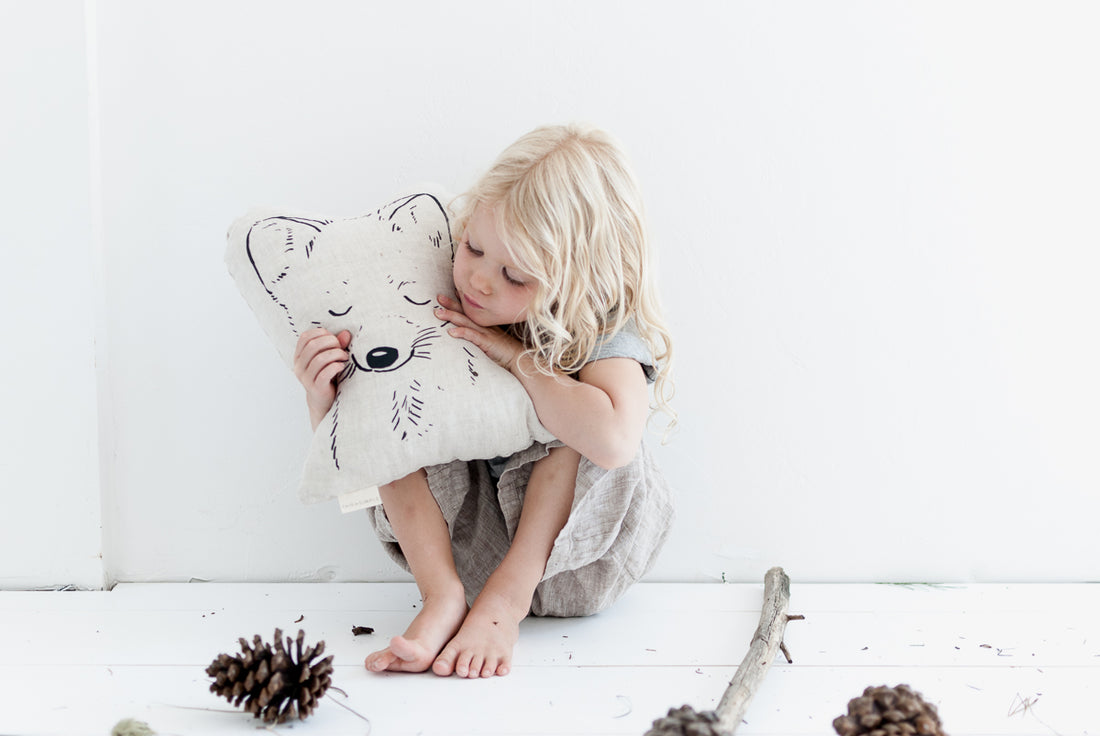
4 Ways to Involve Children in Shopping Responsibly
Share
I talk to my kids about the principles behind Fair+Simple. My oldest can even do a mean elevator pitch for the company. He told me the other day that he was really glad I was teaching them to be careful with how they shop, and it lit a fire in my heart to write this post.
Here are some ideas for talking to young children about social responsibility.
1. Explore their favorite brand's website
When the subject of responsible purchasing was first broached, the poor guy's palms must have started sweating when he considered his favorite toy in the whole world: Legos. So, we did some research. It was a great chance to show him where to look for his answers, and he loved a chance to clock some quality time on the Lego website. The first place I check is in the company's "about" section. The second place we looked was at the footer, normally titled "responsibility", "transparency", or "sustainability". His life flashed before his eyes; but lucky for him, Lego is doing some pretty cool stuff.
We looked at both Legos and then beanie boos, his generation's version of the beanie baby craze. For beanie boos, we didn't find any reference or information on how the product is made. We took this chance to send a kind and open ended email to the company, but didn't hear a response.
Now I see his sweet heart look in stores at these stuffed animals with their oversized eyes, and pass them up. This little man votes with his dollar.
[Full disclosure - between writing this article and posting it, he asked to buy a mini one that was strategically located at the impulse checkout aisle. I get it, bud.]
2. Check manufacturing labels
Ask the to grab their 3 favorite clothing items and three favorite stuffed animals. Check the labels and see where it is manufactured. Find those countries on a map. Ask the following questions:
- Why was this made in a country so far away?
- How did it get all the way to us?
- How was it made?
- Does it look well made? How can you tell?
It's not about them knowing the right answers, and it's all about them asking questions. It might be an introduction to the fact that a machine did not pop out the clothes. There is a person behind every seam.
3. Take them to a thrift store
You gotta train em up young, people. But taking my three small kids to a thrift store is the world's worst idea. Taking one at a time, on the other hand, is so fun. Let them get that 25 cent puzzle, but take the time to count it and make sure it has all the pieces. Talk about why you aren't going to purchase the loud, plastic toy that is missing all of its pieces. Who knows, maybe they'll score a boo.
This approach is very different than veering off toward every garage sale you pass in the heat of the day during summertime. That never ends well, except when it does and you score that $2 vintage leather purse that just keeps you coming back for more. You have to make it a positive and rare experience, so they want to do it. While we are on the subject, can someone please make a compilation video of women spotting a garage sale and swerving over on the side of the road to go to it?
4. Share a positive experience
It's all about the total experience, and large department stores can't compete with the personal stories that often come with items purchased from social good companies. Sometimes, they even have a signature! When my girls wear their "cat beanies", they are wearing a story. They have read the bio of the woman in Uganda who crocheted it, wrote a thank you, and got to peek into the life of someone across the world. The value and experience of wearing that beanie has increased. Plus they look like white cats, so it's an all around solid win there.


